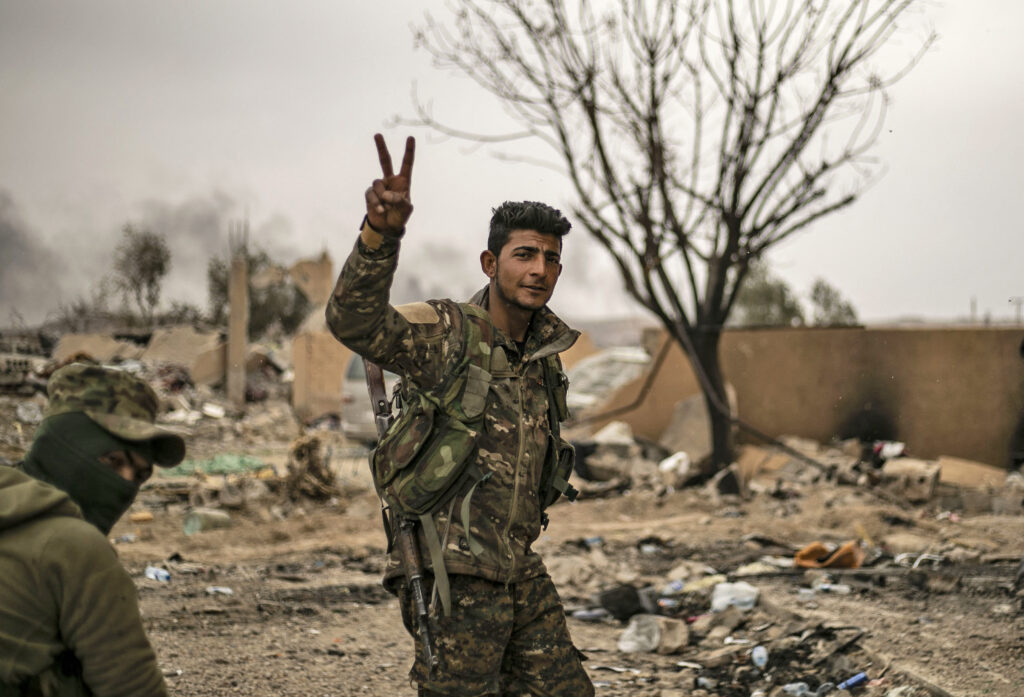Exactly two years ago today, on 23 March 2019, Daesh fighters abandoned the final scraps of land they had occupied at al-Baghouz Fawqani. They were driven out by Coalition-backed Syrian Democratic Forces (SDF), whose vanguard included members of the al-Shaitat, a Sunni Arab tribe that had suffered grievously from Daesh’s brutality. As operations concluded, Daesh fighters and their families fled the squalid tented camp to which they had retreated. Under intense and sustained pressure, some reports suggested that Daesh had even executed its own fighters.
Daesh’s loss of al-Baghouz Fawqani was a hugely symbolic moment. The conclusion of nearly five years of gruelling military rollback, it signalled an ignominious end to Daesh’s territorial ambitions in the Levant. At its peak Daesh had some occupied 41,000 square miles across Iraq and Syria – a power it used to murder, humiliate, and extort funds from civilians. It systematically stole the resources of communities, from oil to antiquities, in an ultimately vain attempt to sustain its campaign of violence.

For Daesh, the holding of territory was central to its appeal – the tangible advantage it held over al-Qa’ida and other Salafi-Jihadist groups. Its claim to be ‘governing’ areas that it seized was the centrepiece of propaganda designed to lure in recruits from across the globe. Yet what those recruits discovered on arrival was horrific. Far from the utopian idyll painted by Daesh’s videos and magazines, they found filth, hunger and arbitrary misrule. Only last week, a Kazakh woman who had travelled to join Daesh in Syria described the “terrible injustices” she witnessed them commit. The Syrian residents whose towns and cities Daesh occupied reported that “human beings cannot survive,” and that there was “no freedom”.
In December 2017 then Prime Minister Haider al-Abadi declared victory over Daesh in Iraq. Meanwhile, the struggle continued in Syria, where the Deir ez-Zour campaign saw the SDF – supported by their Global Coalition allies – chasing down Daesh to a sliver of ground in the middle Euphrates river valley.
As its territory receded, Daesh’s propaganda pivoted from hubris and triumphalism, to warnings that its fighters would endure hardship. This was a significant tilt; amongst its supporters, Daesh’s pretensions to both invincibility and statehood had proven highly energising. Its fierce reputation increasingly compromised, in the months that preceded its defeat at Baghouz, Daesh fought a rear-guard action to defend not only its fast-disappearing territory, but a brand that was losing its lustre.

Two years on from its defeat on the banks of Euphrates, Daesh remains desperate to regain relevance. While its territorial fantasies remain buried, in North and East Syria it remains capable of intimidating the communities that so decisively rejected it. To the West, in areas of the Badia desert nominally under the control of the Syrian regime, a recent uptick in operational activity is a cause for concern.
In ensuring that Daesh cannot resurge, the international community faces significant challenges. Ensuring consistent security in the towns, cities and countryside it once tyrannised. Delivering justice for those who suffered under Daesh’s cruel occupation. The safe return and reintegration of internally displaced persons. Above all, an end to the ten year-long conflict in Syria. Last week the Foreign Ministers of the US, UK, France, Germany, and Italy reaffirmed their support for UN Special Envoy Geir Pedersen’s mission to implement Security Council Resolution 2254, bringing the wider conflict to an end through an inclusive political process.
“We cannot allow this tragedy to last another decade,” they stated.
Elsewhere in the world, particularly in Africa, groups aligned to Daesh are increasingly wreaking destruction. This too must now be considered an urgent shared security priority.
For the defining image of Daesh in Syria, we should not look to its own highly choreographed displays of power and brutality. Rather, we should reflect on the footage of desolate and detritus-strewn ground at Baghouz, the aftermath of its final defeat. Its brand has never recovered from those military and territorial losses, or from the many testimonies that exposed the grim reality behind its propaganda. However, while Daesh continues to plot violence from its desert hideouts, collective vigilance will remain essential – as will international action to continue stabilising the communities it once sought to destroy.

